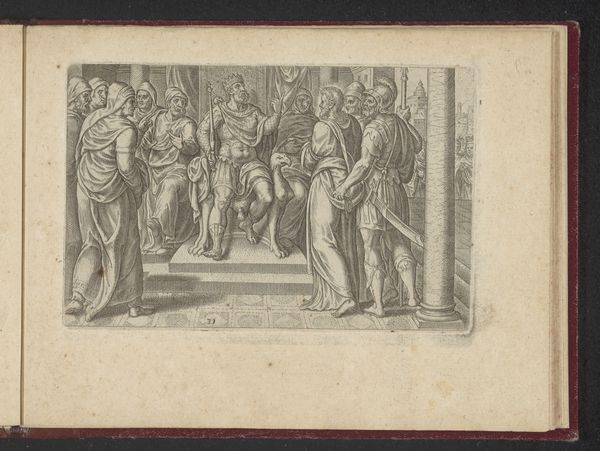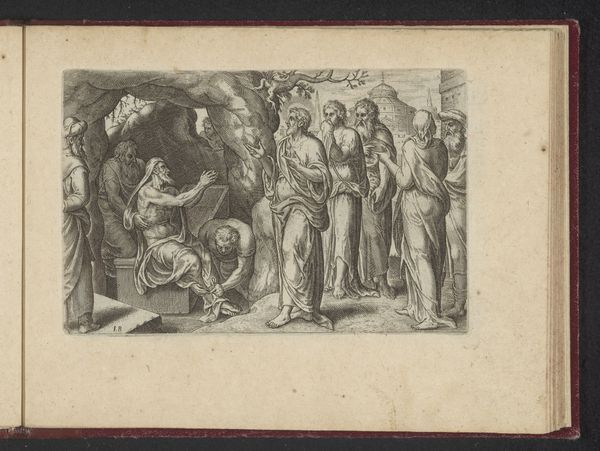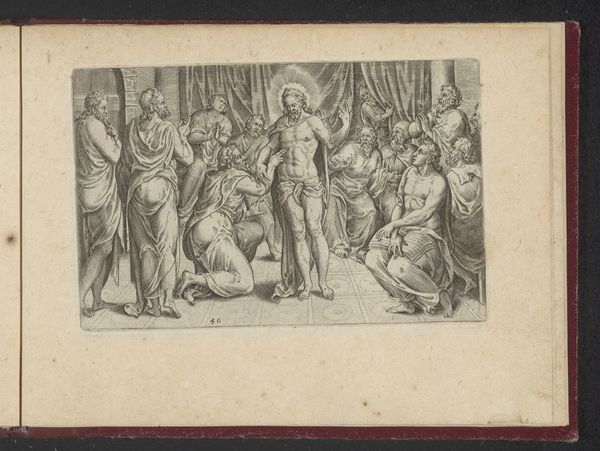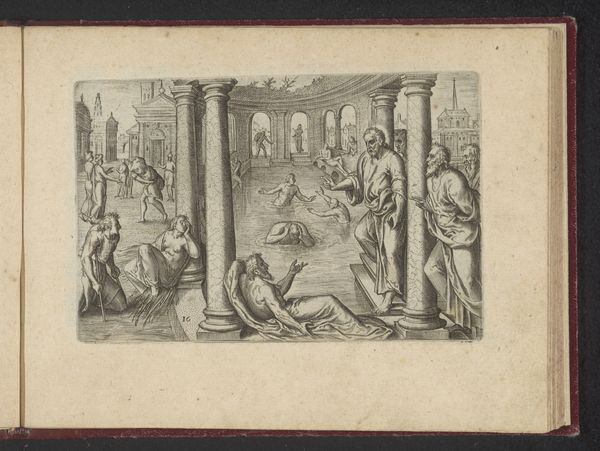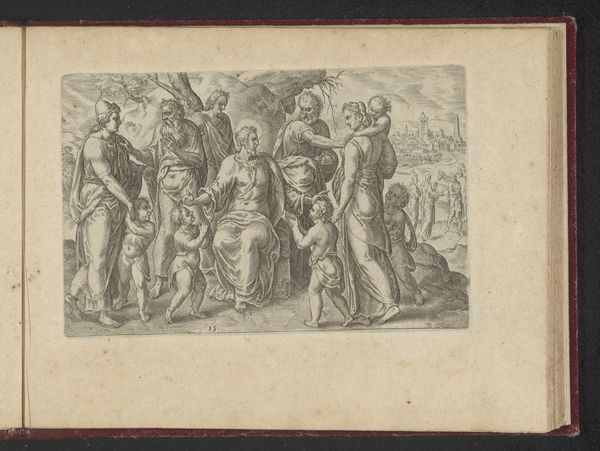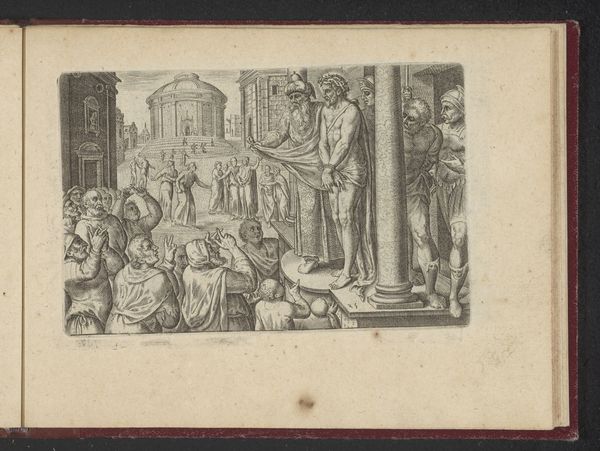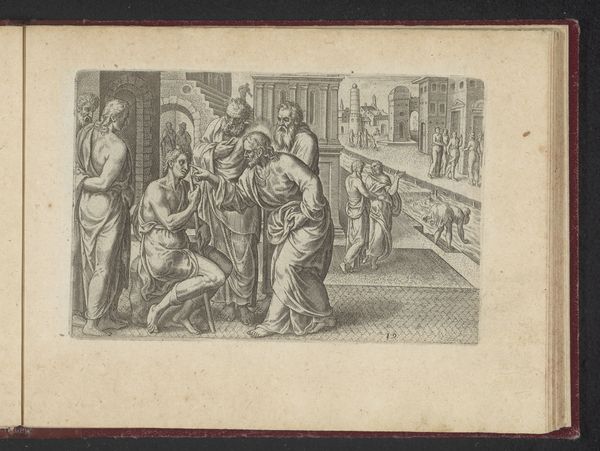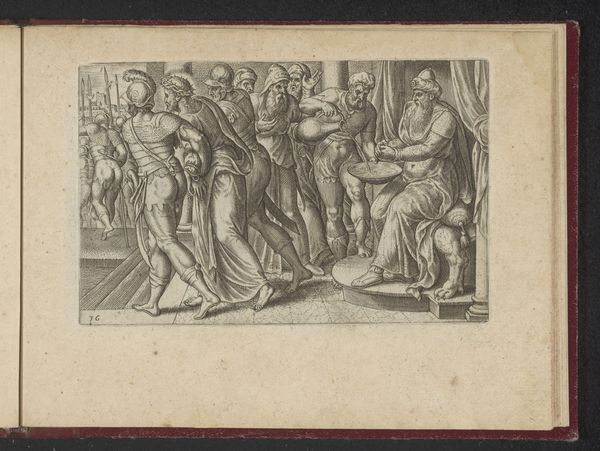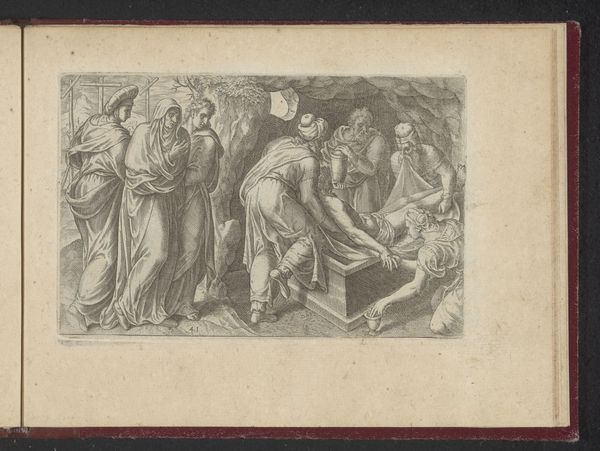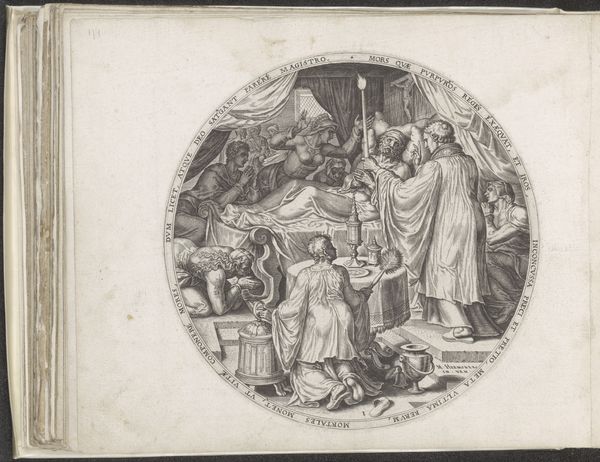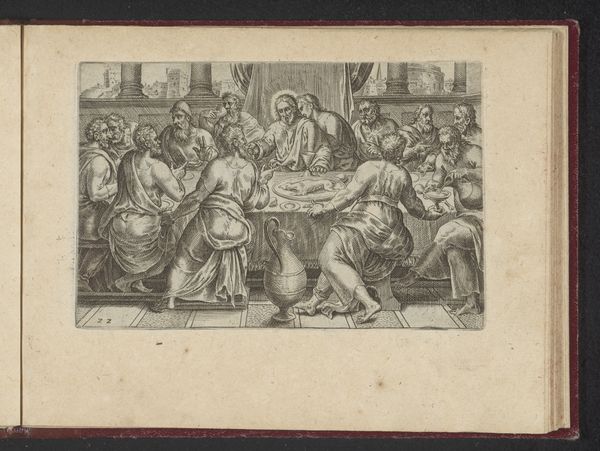
print, ink, engraving
#
portrait
#
pen drawing
# print
#
figuration
#
ink
#
line
#
history-painting
#
northern-renaissance
#
engraving
Dimensions: height 92 mm, width 139 mm, height 137 mm, width 183 mm
Copyright: Rijks Museum: Open Domain
Editor: Here we have "Pinksteren," from 1573, an engraving by Philips Galle, currently held at the Rijksmuseum. I'm struck by how much detail he manages to convey with what looks like simple lines. What's your take on this piece? Curator: My interest lies in Galle’s choices of material and his engraving process. He's using printmaking, a technique facilitating the mass dissemination of imagery, especially religious scenes like this one - "Pinksteren" or Pentecost. Consider how this medium, more accessible than painting, influences the consumption of religious narratives in the 16th century. The choice of ink and the labor involved in producing multiple impressions shifts the creation of sacred art. Editor: So you're less focused on the "who" and "what" and more on the "how?" Does that influence the subject matter? Curator: Precisely! Look at the production—each line etched into the metal plate requires skilled labor. Galle isn't just illustrating the biblical Pentecost; he's participating in the material culture of religious expression. He and other makers have to find a balance between art as a commodity, and using their skillset. Does that prompt new ways of representing a sacred story for him? Editor: That makes a lot of sense. Thinking about it, printmaking makes this biblical scene available to more people, right? Not just wealthy patrons but ordinary folks, too. Curator: Exactly. And think about where these prints ended up. Were they framed and displayed, or were they used for personal reflection, maybe pasted into books? Editor: It's fascinating to think of it in that light. I had been seeing the engraving only as an isolated artwork. I appreciate that there is much more context there. Curator: The material conditions shape how we understand the artwork and the narrative itself, so our understanding becomes much more rounded.
Comments
No comments
Be the first to comment and join the conversation on the ultimate creative platform.
